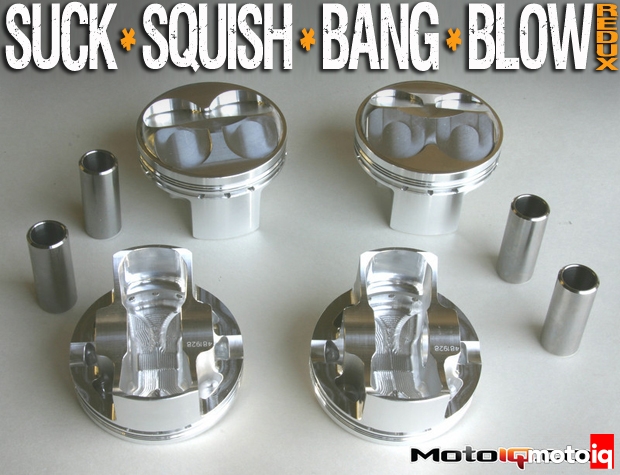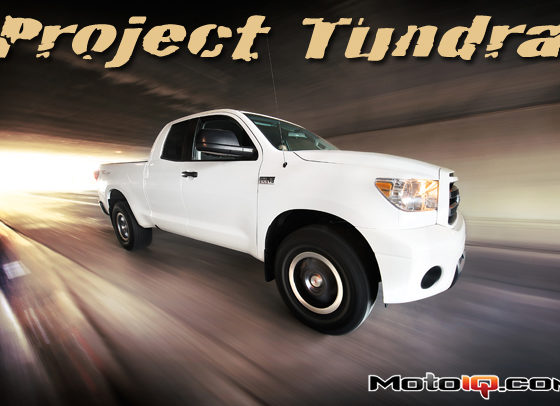,
The Cylinder Head
The cylinder head is, on most engines, an aluminum casting that caps off the top of the block and contains the spark plugs, valves and the valve train. The head must contain the explosive force of the igniting fuel air mixture so the explosion of said mixture can only drive the piston down the bore instead of blowing out of the bores top. The cylinder head contains the chambers where the explosion of gasoline and air occurs when the piston is on top of its upward stroke. This is called the combustion chamber. When looking at the underside of the cylinder head, the side that bolts to the block, the combustion chambers are the depressions that line up with the tops of the bores. The cylinder head has the combustion chambers cast into it. The valves and sparkplug are located in the combustion chamber. It is in these chambers where, when the piston is at the top of its stroke, the fuel air mixture is ignited by an electrical arc created by the the spark plug, kicking off the power stroke. The cylinder head also has cooling jackets filled with circulated water to help keep the combustion chambers from getting too hot.
 |
| The cylinder head contains the combustion chambers, intake and exhaust valves. |
On a modern engine the head also contains the intake and exhaust valves. The intake and exhaust valves are spring loaded poppet type valves. The springs hold the valves shut, but allow them to be opened with a push. The intake valves open to admit the explosive mixture of fuel and air into the combustion chamber. They then close to allow the engine to build up compression pressure as the piston, driven by the crank comes up to TDC or top dead center, this is what engine builders call the event when the piston is at the top of the stroke. When the spark plug ignites the compressed, explosive fuel air mixture, the piston is driven down by the explosion, turning the crank. The exhaust valves open near the bottom of the pistons downward travel, allowing the burnt waste gasses to escape when the piston comes back up the bore as the crank spins to prepare the combustion chambers for the next charge of fresh fuel and air.
The valves are opened and closed by the camshaft or camshafts which are basically rods with off center bumps or lobes on it that spins in the cylinder head at 1/2 of the crankshafts speed. The lobes of the camshaft push the valves open and closed so that air and fuel can be admitted with burnt exhaust being expelled. Sometimes the cam can work directly on the valve. Many motorcycles and racing type engines are like this. Typically the camshaft works the valves through a rocker arm which is like a miniature teeter –totter. One end of the rocker arm rubs on the rotating camshaft with the other end pushing the valves open and closed.
 |
| The fuel and air flow through the intake port, past the intake valves into the combustion chamber. |
Modern valvetrains (the parts that open and close the valves, including the valves, cams, valve springs and other parts to be discussed) are typically called overhead cam valvetrains. This means that the camshaft is contained within the cylinder head on top of the valves. This is opposed to overhead valve systems common in many domestic V-8’s that have the camshaft located in the middle of the block, connecting to the valves with, lifters, long pushrods and rocker arms. Overhead cam engines are typically better for the typical high rpm, small displacement compact car or motorcycle engine, because they have simpler, lighter, more direct acting valve trains. These valvetrains work better at high rpm because their lower inertial mass allows them to follow the camshaft’s lobes with more accuracy. If the engine has only one camshaft that controls both the intake and exhaust valves though rockers it is called a SOHC or single overhead cam engine. The Honda D16 that is found in the ever popular Civic and the Nissan VG30 are examples of SOHC engines.
 |
| The EVO IX has a 4G63 engine with dual overhead cams or DOHC. The valves are activated by small and light rocker arms. |
Many modern high performance engines have dual overhead cams which means that they are separate cams for the intake and the exhaust valves. The advantage with this is that the cam can be placed very close to the valve allowing the cam’s lobes to either work directly on the valves or through a very small rocker arm. This reduces the inertial mass of the valve train to a minimum, which helps high rpm operation even more. Just about all high performance engines use dual overhead cam valvetrains also known as the DOHC configuration. The Mitsubishi 4B11 found in the EVO X and the Honda K20A are prime examples of DOHC motors.



